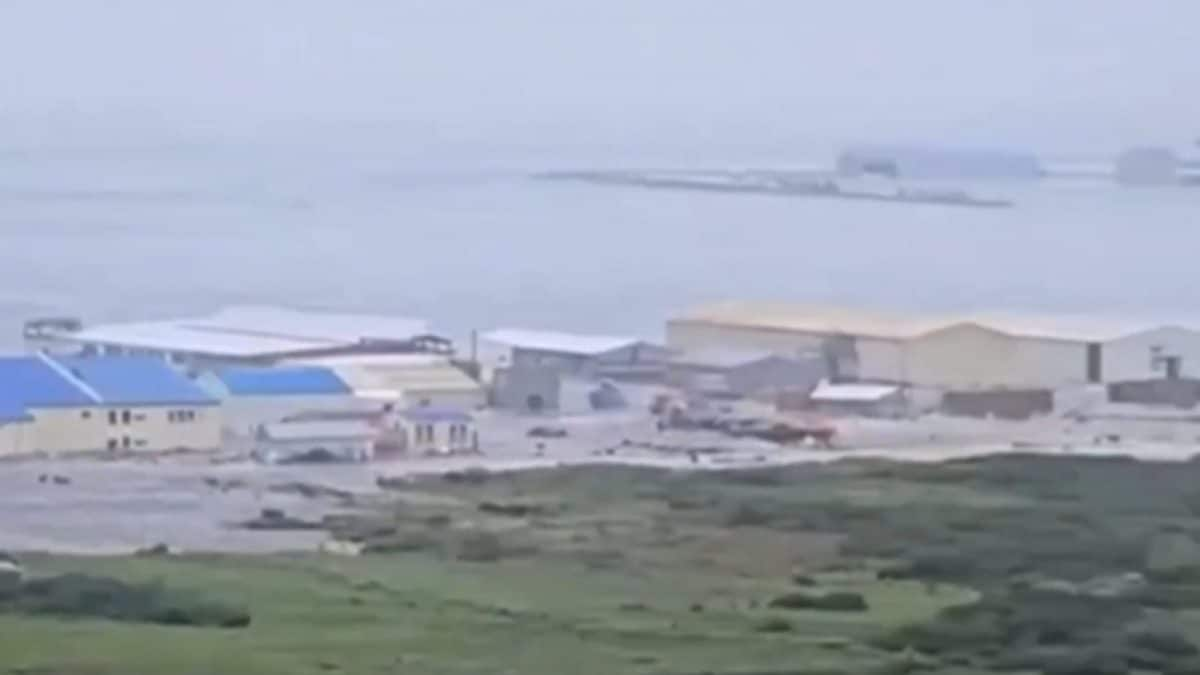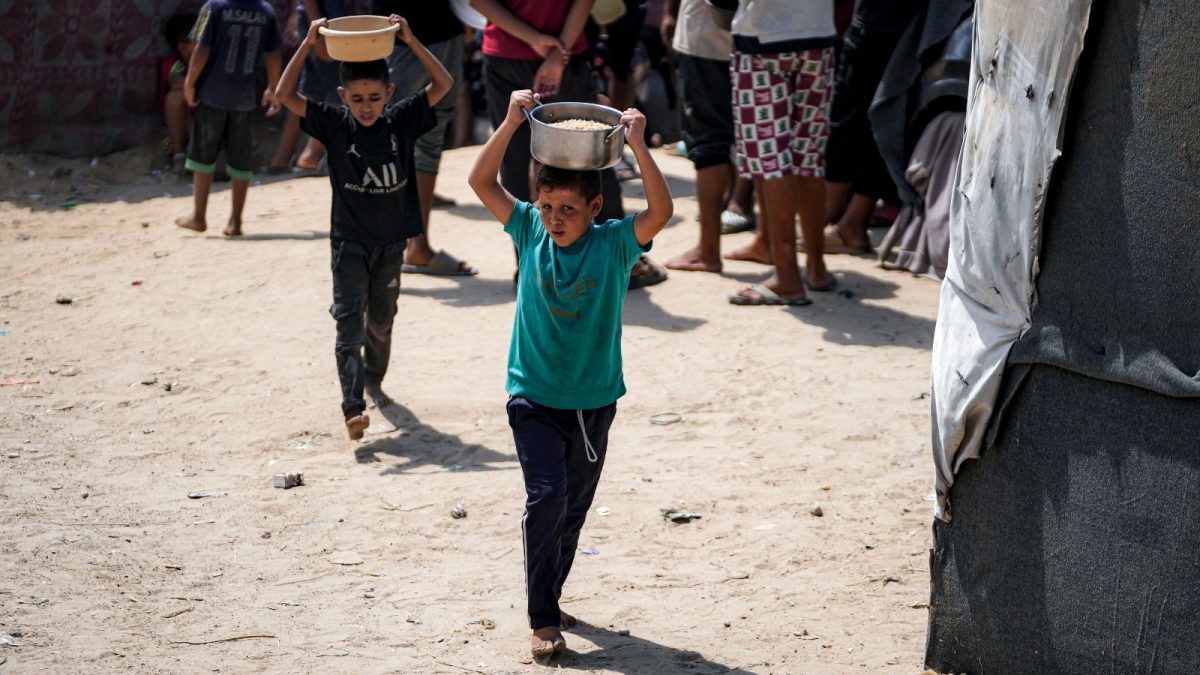Last Updated:June 14, 2025, 08:38 IST
As missile strikes escalate and direct warfare replaces proxy battles, here’s a detailed comparison of Iran and Israel’s military strengths.

Tensions escalate as Israel and Iran engage in direct military confrontation involving missiles, drones, and regional threats. (Image: Shutterstock)
Air-raid sirens sounded across central Israel early Saturday morning, June 14, as Iran launched a fresh wave of ballistic missiles and drones towards key Israeli cities, including Tel Aviv and Jerusalem. The pre-dawn barrage, confirmed by Iranian state media, came just hours after a second consecutive night of intense cross-border fire. Once again, Israel’s missile defence systems—Iron Dome, David’s Sling, and Arrow—were activated, lighting up the sky with interceptors as civilians rushed to bomb shelters for the third time in under 48 hours.
The escalation began on June 12, when Israel launched Operation Rising Lion, a wide-ranging aerial offensive that targeted nuclear and military sites deep within Iranian territory. The strikes killed several senior IRGC commanders, including Aerospace Force chief Amir Ali Hajizadeh and Armed Forces Chief of Staff Mohammad Bagheri, as well as nuclear scientists such as former Atomic Energy Organisation head Fereydoon Abbasi. Extensive damage was reported at the Natanz uranium enrichment facility, one of Iran’s most sensitive nuclear sites. Footage from Iran also showed explosions near Isfahan, and even around central Tehran, triggering panic and immediate vows of retaliation from Supreme Leader Ayatollah Ali Khamenei.
On Friday night, Iran made good on that threat. Under the banner of ‘True Promise 3’, Iranian forces launched more than 150 ballistic missiles and a swarm of drones toward Israeli targets. Interceptor systems were again activated across central and southern Israel, with the Times of Israel reporting over 60 injuries and the death of a woman who later succumbed to wounds sustained during the attack. Videos from Tehran showed Iranian air defences engaging targets over Moniriyeh, a neighbourhood close to the residence of Khamenei and the Iranian president, suggesting that Israeli strikes had reached alarmingly close to the regime’s highest offices.
With both sides now engaged in open, direct military confrontation, the long-running shadow war between Israel and Iran has turned into a dangerous and highly volatile shooting conflict.
As the international community scrambles to contain the fallout, one fundamental question has become more urgent than ever: How do Iran and Israel stack up in a direct military comparison?
Ground Forces And Manpower
Iran holds a significant numerical advantage when it comes to personnel. According to the Institute for Strategic Studies (IISS), Iran’s regular army (Artesh), Islamic Revolutionary Guard Corps (IRGC), and paramilitary Basij together make up over 600,000 active personnel, with additional reserves pushing the total beyond 900,000. The IRGC operates its own ground, naval, and aerospace units and holds a dominant role in strategic operations, both domestically and abroad.
Israel, by contrast, maintains a far smaller but highly trained force. The Israel Defense Forces (IDF) comprises around 170,000 active personnel and an estimated 460,000 reservists. Despite its smaller size, Israel’s military is known for rapid mobilisation, conscription-based readiness, and integrated command systems that allow it to respond quickly across multiple theatres.
Verdict: Iran dominates in numbers; Israel in readiness and force quality.
Air Power
Air superiority has long been Israel’s defining military edge. The Israeli Air Force (IAF) operates F-35I ‘Adir’ stealth fighters, alongside squadrons of upgraded F-15s and F-16s, mid-air refuelling tankers, AWACS surveillance aircraft, and electronic warfare platforms. Its ability to strike distant targets with precision was demonstrated in its June 2025 offensive, which reportedly disabled multiple Iranian radar and missile systems in one night.
Iran’s air force remains outdated by comparison. Despite decades of sanctions and import restrictions, Tehran has maintained a fleet of legacy American F-4s and F-5s, Soviet-era MiG-29s, and a small number of domestically upgraded platforms. While some new Russian systems have reportedly entered service, Iran still lacks true fifth-generation capabilities and relies more on surface-to-air missiles (SAMs) for airspace defence.
Verdict: Israel holds overwhelming superiority in air combat, strike capability, and ISR integration.
Missiles And Drones
Here, the comparison becomes more nuanced.
Iran possesses the largest ballistic missile arsenal in the Middle East. According to US and Israeli intelligence, its arsenal includes the Shahab-3, Fateh-110, Sejjil, and newer solid-fuel models with ranges between 300 and 2,000 km. The IRGC Aerospace Force manages these systems, which are dispersed across underground silos and mobile launchers. Crucially, Iran has also emerged as a major drone power, using UAVs like the Shahed-136, Mohajer-6, and Ababil-3 in both surveillance and kamikaze roles. These systems have been supplied to proxies across the region and reportedly to Russia in the Ukraine war.
Israel, meanwhile, maintains a smaller missile arsenal focused on high-precision, short- and medium-range systems like the LORA (Long-Range Artillery) and the Jericho series, which reportedly form the basis of its strategic deterrent. Israel also leads in drone technology, operating combat-tested UAVs for reconnaissance, surveillance, and precision strikes. However, it lacks the volume and diversity of missile platforms that Iran possesses.
Verdict: Iran leads in missile quantity and range; Israel leads in drone capability and strike accuracy.
Missile Defence Systems
One of Israel’s most significant military achievements in recent years is the development of a multi-layered missile defence network. The Iron Dome system intercepts short-range rockets, while David’s Sling and Arrow-2/3 counter medium and long-range threats, including ballistic missiles. These systems, developed with US cooperation, have successfully intercepted thousands of projectiles since 2011 and played a pivotal role in defending against Iran’s retaliation.
Iran’s air defence network is being modernised but remains inconsistent. The country has imported Russian S-300 systems and deployed indigenous platforms such as the Bavar-373 and Khordad-15, which Tehran claims rival the S-400. However, recent Israeli strikes reportedly penetrated these defences with limited resistance, raising questions about the readiness and integration of Iran’s air defence grid.
Verdict: Israel’s missile shield is battle-proven and technologically superior.
Naval Capabilities
Naval strength is another asymmetric arena. Iran fields two separate naval commands: the regular Iranian Navy (IRIN) and the IRGC Navy. The latter specialises in littoral warfare, swarm tactics, fast-attack boats, and missile-equipped speedboats that can disrupt shipping in the Strait of Hormuz. Iran also operates a number of diesel-electric submarines and has tested anti-ship ballistic missiles.
Israel’s navy is smaller but more technologically advanced. It operates Dolphin-class submarines, likely capable of launching nuclear-tipped cruise missiles, and Sa’ar-class corvettes with advanced missile defences. The Israeli navy plays a key strategic role in securing offshore gas assets and provides a second-strike capability through its submarine fleet.
Verdict: Iran has regional disruption capabilities; Israel has strategic maritime deterrence and underwater supremacy.
Cyber And Intelligence
Both countries are considered major cyber powers.
Israel is widely credited with launching the Stuxnet worm that disrupted Iran’s nuclear programme in 2010, in partnership with the United States. The country’s Unit 8200 is a leading SIGINT and cyber warfare unit. It also has deep integration between military intelligence, Shin Bet (internal security), and Mossad (external operations), enabling pre-emptive and precision targeting.
Iran has developed significant cyber capabilities of its own, orchestrating attacks against Israeli infrastructure, US banks, and Saudi energy assets. The IRGC runs its own cyber division and has used cyber operations to support proxy forces in Syria, Iraq, and Lebanon.
Verdict: Israel leads in offensive cyber-intelligence integration; Iran in scale and persistence of attacks.
Proxy And Regional Influence
Perhaps the biggest difference lies in strategic doctrine. Iran has built an expansive network of proxy forces—including Hezbollah in Lebanon, Hamas and Islamic Jihad in Gaza, Shia militias in Iraq and Syria, and the Houthis in Yemen. This “Axis of Resistance" gives Tehran the ability to open multiple fronts and wage asymmetric warfare far from its borders.
Israel has no such proxy network but relies on targeted operations, intelligence superiority, and direct military action to counter Iran’s influence. Its recent decapitation strikes on IRGC officials in Syria and Lebanon, as well as sabotage operations inside Iran, reflect a strategy of pre-emption and disruption rather than attrition.
Verdict: Iran dominates in regional influence via proxies; Israel counters with surgical force and intelligence.
The Nuclear Question
Israel is widely believed to possess a nuclear arsenal—estimated between 80 and 200 warheads—delivered via Jericho III missiles, Dolphin-class submarines capable of launching cruise missiles, and nuclear-capable F-15I and F-16I aircraft. It maintains a policy of “nuclear ambiguity" (amimut), meaning it neither confirms nor denies the existence of such weapons.
Iran, while officially denying any intent to build nuclear weapons, has significantly advanced its enrichment programme. According to a May 2025 IAEA report, Iran possesses approximately 408.6 kg of uranium enriched up to 60 per cent—enough for 9–10 warheads if enriched to weapons-grade.
Verdict: Israel holds an undeclared but functional nuclear deterrent; Iran is at the threshold but not yet there.
Final Word
In conventional military terms, Israel holds a qualitative edge, with superior air power, cyber capabilities, missile defence, and nuclear deterrence. Iran, however, compensates with strategic depth, regional proxies, a massive missile inventory, and a growing asymmetric doctrine that challenges Israel across multiple fronts.
While Israel’s focus is on defending its territory with high-tech systems and rapid strike capabilities, Iran’s doctrine is built around deterrence through overreach—leveraging allies, missiles, and ideology to spread Israeli forces thin.
The real question is no longer who is stronger militarily, but how long this direct confrontation can be contained before it spirals into a wider regional war, or possibly draws in global powers.

Karishma Jain, Chief Sub Editor at News18.com, writes and edits opinion pieces on a variety of subjects, including Indian politics and policy, culture and the arts, technology and social change. Follow her @kar...Read More
Karishma Jain, Chief Sub Editor at News18.com, writes and edits opinion pieces on a variety of subjects, including Indian politics and policy, culture and the arts, technology and social change. Follow her @kar...
Read More
News explainers Who Has The Upper Hand In The Israel-Iran War? A Breakdown Of Military Power | Explained

 1 month ago
1 month ago

















